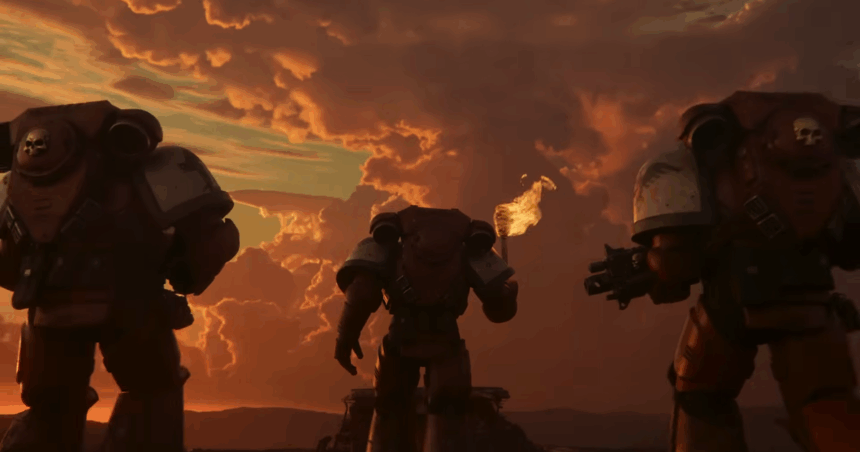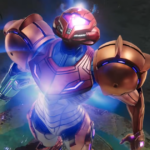Dawn of War 4 is back, and I’m feeling pretty good about it. You can read my full thoughts on actually playing it – or really, playing the one available skirmish about six times over and over – in our big Dawn of War 4 preview, but alongside that hands-on time we also had a virtual sit-down with DoW 4’s brand new development team.
The top line is that the studio has, at least at first glance, done a pretty comprehensive job of taking the original Dawn of War – and a few sprinkles of its sequels – and turned it into a properly modern entry. It’s honed in on the first of the trilogy as inspiration, for starters, bringing back classic aspects like full base-building and standard RTS style maps with requisition points and all the regular gubbins. And, aside from maybe just missing a bit of campy levity here and there, the developers have also got the tone pretty spot-on, going full grim, dark, and down in the muck and mud.
Put it down on paper like that and it all sounds simple enough, but naturally for new developer King Art Games, a studio based in Bremen, Germany – which has only produced one RTS before, in 2020’s generally well-received Iron Harvest – following on from heavyweight strategy studio Relic was of course a challenge.
You might be wondering how a storied series such as Dawn of War came to be made by a studio with such a short history of strategy game development (albeit one with a long history of developing all kinds of games overall, from point-and-click adventures to browser games, via the Nintendo DS’s Inkheart, tactical RPG The Dwarves and more, stretching back to its founding in the year 2000.) The answer involves a little bit of serendipity – but also, a clear indication that King Art earned its role here on absolute merit.
“It came a little bit out of nowhere,” studio co-founder, creative director, and DoW 4 game director Jan Theysen tells me. The team was working on its debut RTS, Iron Harvest, at the time, and “since it was a Kickstarter, we were very open and showed a lot of behind-the-scenes stuff, a lot of our technology and what we can do in terms of visuals, and so on,” he explains. “And someone at Games Workshop saw that. They basically came to us and said, ‘You know, hypothetically, if we would do a Dawn of War 4, what would you do with it?'”
Theysen assumes Games Workshop asked “a bunch of different developers” the same thing, and so the team went away and made a proper presentation just to try their luck. “Let’s come up with the concept and let’s do our best,” as Theysen puts it. “But we didn’t really expect this to go anywhere, right?” The studio sent over the presentation, focused back on Iron Harvest, and later on after the game was released, a few conversations with publisher Deep Silver later (and probably a lot more convoluted conversations than that behind the scenes) and the decision was made. Dawn of War left franchise custodians Relic, which had a couple of tricky years before its recent move to independence from Sega, and came to its surprise new home in Germany.
“Relic is a studio that we owe a lot to,” Elliott Verbiest, senior game designer, added. “As the entire genre of real-time strategy owes them a great debt for all the work they’ve done, across not just Dawn of War but all their other titles… for us it’s an enormous honour to pick this up.” There’s a little pressure, understandably. “It does feel like we are trying to fill very, very big boots in this regard,” he continues, and is keen to emphasise the studio’s desire to “do that legacy right… that we can say: Okay, the things Relic did really, really well, we can only hope that we follow in their footsteps.”
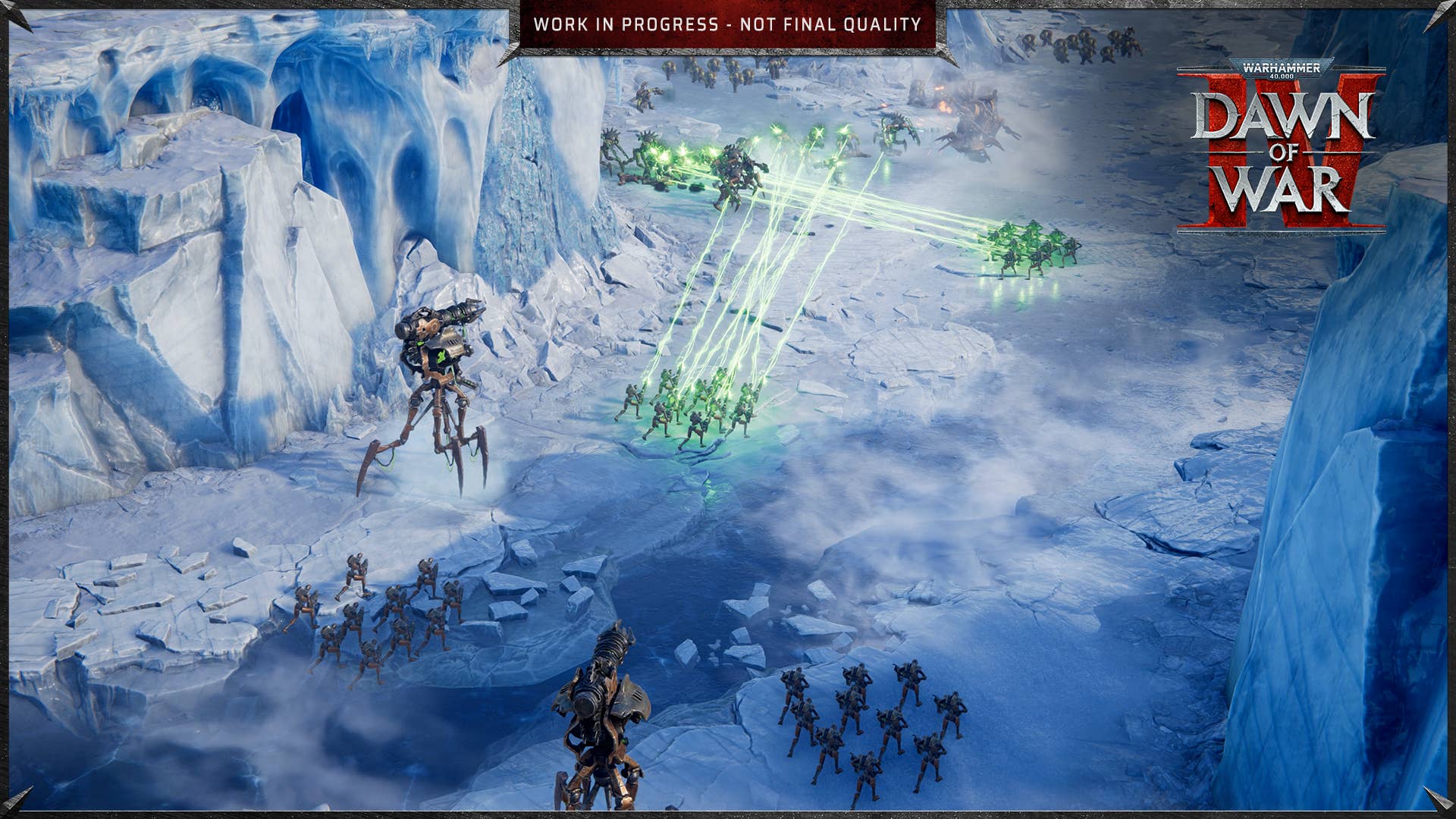
How did King Art decide what to focus on for a new Dawn of War game, and which elements did it feel were particularly important to get right? “There is not really a ‘Dawn of War formula’,” Theysen says, noting the difference even from the first DoW to the much smaller-scale, more tactical DoW 2, let alone the change again to DoW 3. But the team “knew that people were interested in this more classic style of RTS, with base building and economy and research,” and so ultimately opting to focus specifically on the original felt like the most sensible choice. “When in doubt, it’s Dawn of War 1 – but then the point is, of course, that it’s a 20-year old game. What you can’t do is just pick a feature, put it in a new game and assume that it feels the same way that it did for people 20 years before. So we basically asked ourselves: how did Dawn of War make us feel 20 years ago? And how can we evoke the same feelings again today?”
Theysen has some smart answers there. “Dawn of War’s battles feel very distinct, because they’re relatively big battles and they take a while, right? It’s not like they’re fast, surgical strikes – it’s more like ongoing, big battles. You might lose a few units, or you can put a lot of resources in your battles and make sure your units don’t die… eventually maybe you won the battle, but you lost the war, because you paid too much in resources.” The other big example? “Synch kills.”
The studio asked what people loved in the original, and synch kills came up repeatedly – those being the bespoke animations for when a unit, like say a hulking Space Marine Dreadnought, executes another with a flourish, like say picking up an Ork, spinning it around and crushing it in its mechanised hand. That in turn led to one of Dawn of War 4’s defining new additions in the “combat director”, a brilliant visual flourish that means all units, in melee, battle each other with specific, synched up combat animations, as though each fight’s fully choreographed rather than playing out in standard RTS style, with units broadly swinging at the air in their enemy’s general direction.
As for those challenges, Theysen says there were a few. The team already knew what it wanted to improve after Iron Harvest – “could there be bigger armies, or could there be more base-building?” – and used those to “get the cogs turning” for how it might go a step further with Dawn of War. The biggest, in Theysen’s terms, was simply “the overall complexity” of RTS games as a whole, coupled with Warhammer’s expansive, intertwining lore and the sheer number of units and things going on in a Dawn of War game. (King Art’s keen to boast the “more than 110” figure for units and buildings, which is undoubtedly impressive at launch.)
Theysen’s also keen to point out the studio’s history of pivoting quite successfully between genres, if never truly breaking out into the gaming mainstream before Iron Harvest. “We have our 25th anniversary this year, and we did a lot of different games and a lot of different genres on a lot of different platforms, and it was pretty natural for us to just take on a new genre,” he says.

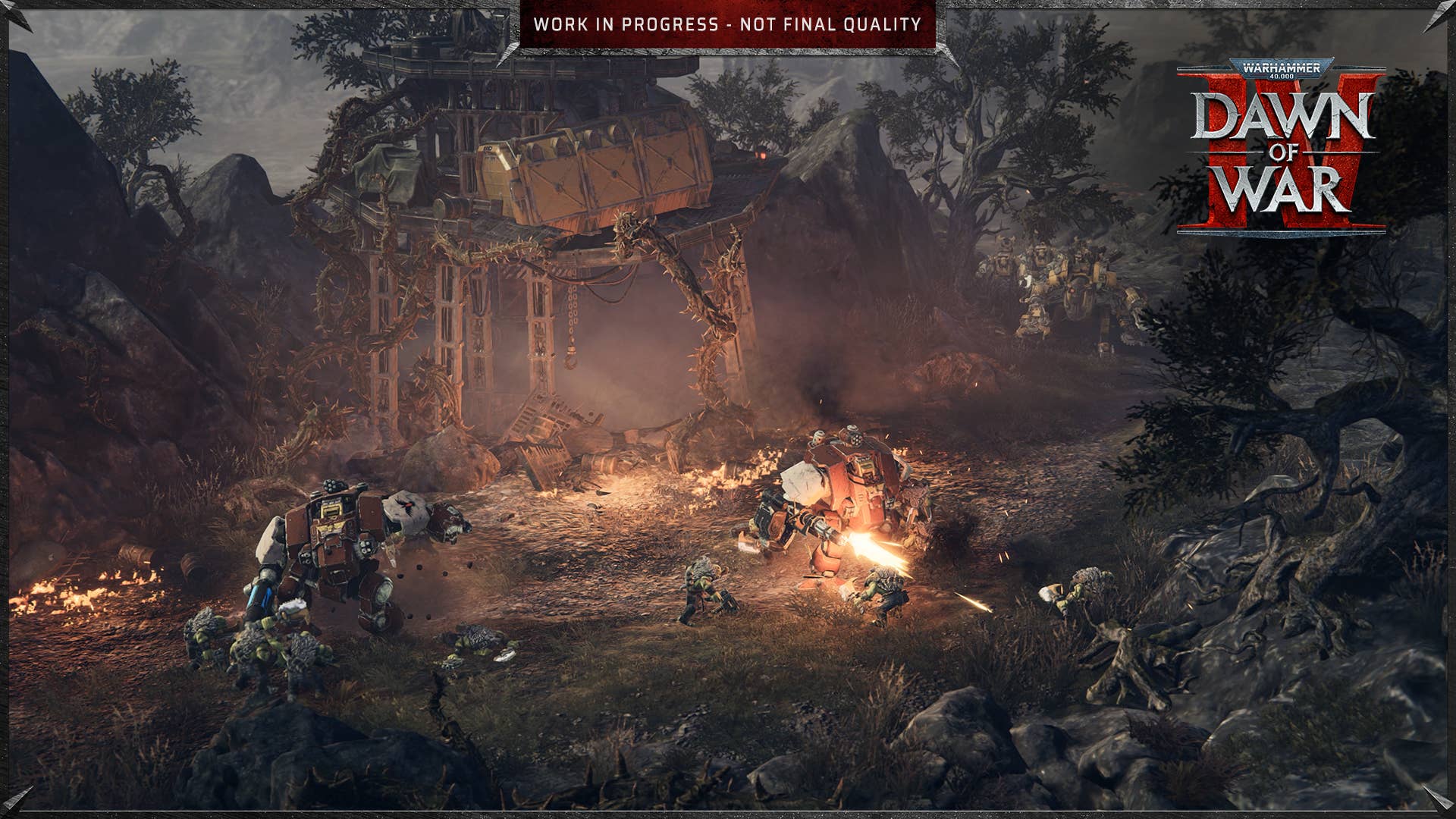
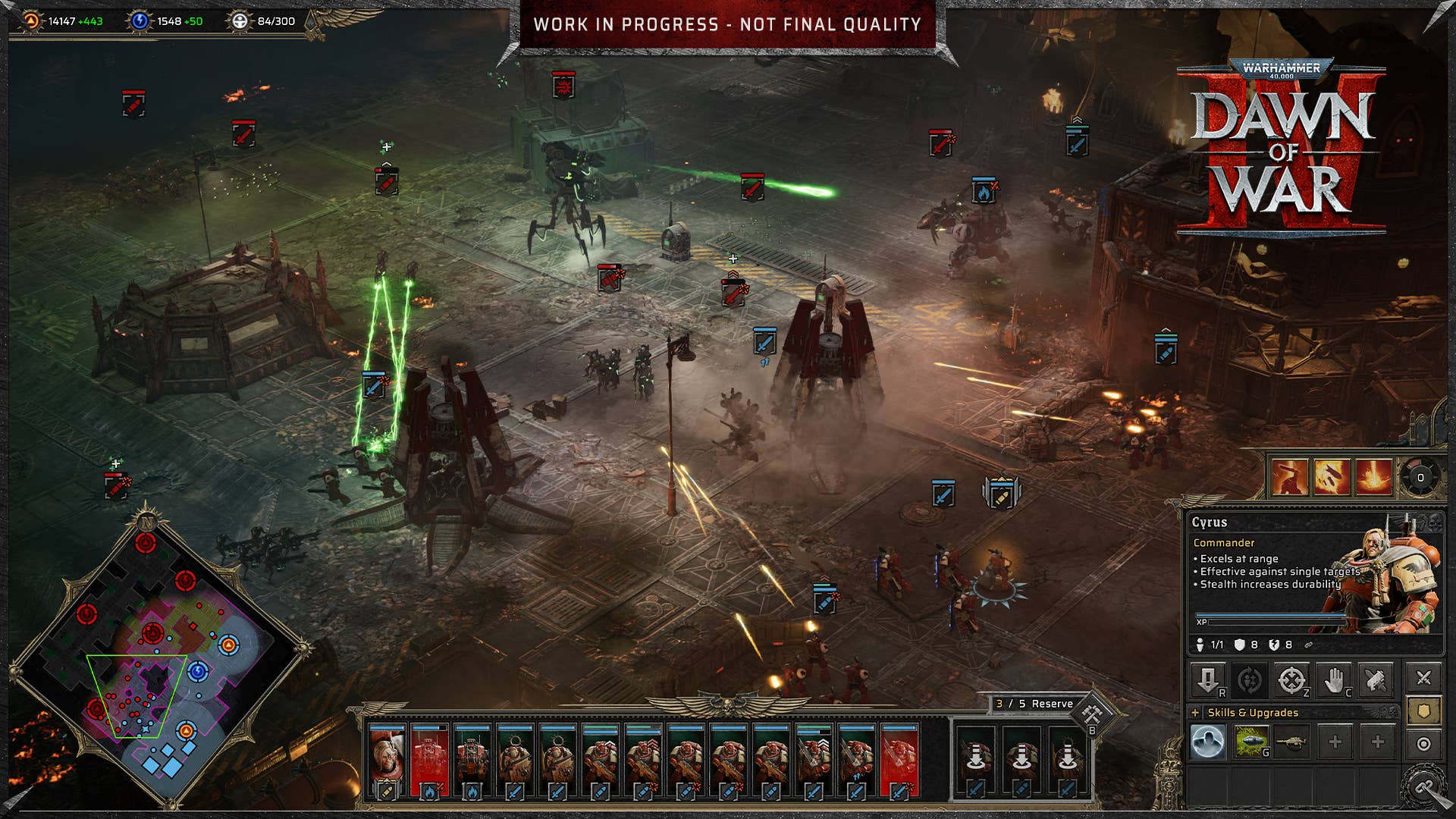
“We usually tackle it by really doing our homework and really trying to figure out what makes these games tick, and play a lot of them and analyse a lot of them. Read everything you can – read about RTS development and so on. Then it really comes down to making educated guesses, and having a lot of people play the game often, right? And getting feedback.” The studio did that a fair bit with Iron Harvest, giving it to that game’s die-hard Kickstarter community early and then iterating.
“This, by the way, is also something we want to do with Dawn of War 4, now it’s finally announced,” he adds. “We want to make sure we get it in the hands of the players to get their feedback and input – because to be honest, it’s so complex and so complicated that, for example, with four really different factions to balance for multiplayer, you just need a lot of people playing the game.”
And then there’s that combat director. The idea actually came from a “hardcore Dawn of War 1 fanatic” at the studio, in Thomas Derksen, the developer’s head of animation. “That was his game,” Theysen says, “his whole teenage years were Dawn of War 1, and he basically said: Okay, if we do this, we do it right.”
None of the team were particularly convinced it was possible, “but basically him and a couple of animators and tech artists and coders, they dug in and, I don’t know, half a year later, they came up with the system that basically dynamically puts little snippets of animations together to form new combat animations.” The result sounds incredibly complex. “It figures out, okay, I’m a smaller unit fighting a bigger unit, that unit is heavy, so there are certain things I can do and I can’t do. There’s an explosion left of me and there’s I don’t know, another ally on the right, this means I could do the following things, and then the system basically dynamically puts together the animations and it works great. Looks great, I think. And is super fun – you always wondered how it would look if a Redemptor Dreadnought fights a Tomb Spider, right? And now you can see it!”
One of those other big challenges was fitting the game into pre-existing Warhammer 40K lore. The return of John French, a prominent Black Library novel author who also wrote on games such as Rogue Trader, certainly helps there. As does opting to set the game on Kronus once more, the planet of the series-peak single-player campaign in the original’s Dark Crusade expansion. Theysen could share a little more of the setup here: “We basically follow the story of Cyrus and Jonah from the previous games,” (Cyrus featured in DoW 2, and Jonah in both 2’s Chaos Rising expansion and DoW 3) “and they go to Kronus in the hope to maybe find some brothers there, or maybe find recruits to rebuild the chapter a bit. But of course, it’s 40K, so everything goes horribly wrong.”
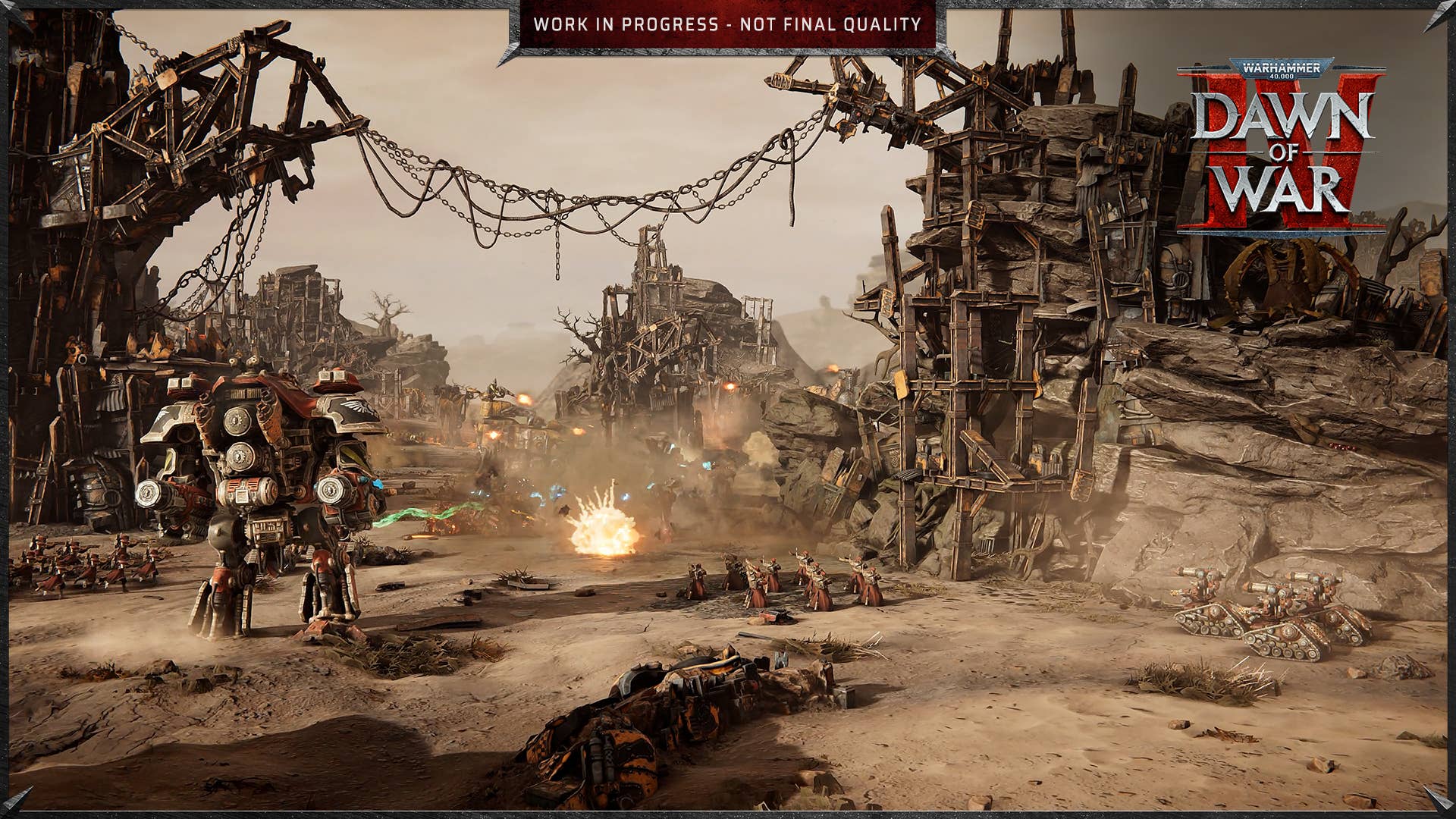
The 200-years-later choice meant the team could use the present-day version of 40K, including all of the story that’s happened since Dark Crusade’s release, but the story itself will be intentionally “Kronus-centric,” as he puts it. “The wider effects might not be the biggest but, let’s put it this way: part of the story is to make sure that actually there are no wider effects for the rest of the galaxy, and it stays contained…”
As for how the four-part campaign will work – which can be played entirely in co-op if you like, it’s clarified – Theysen also shared a little more. There’s really one campaign for each of the factions – Orks, Space Marines, Necrons, and newcomers Adeptus Mechanicus – and then within each of those campaigns there are decisions you’ll have to make which then thread into the next. One example: “when you play the Ork campaign, eventually you have to decide [between] two different war bosses… the Beast Snaggas, which is more like the wild, original Orks, or the Bad Moons, which is more like mechanics, mechs, and so on… and in the end only one of those guys survives or stays around.” Then in the next campaign you play as another faction, the chosen boss is the one you’ll be fighting as, say, the Necrons.
This is all set up on a kind of “world map,” as Theysen puts it, where you’ll be able to select different missions based on what units or bonuses each might unlock for completion, “similar to Dawn of War 2,” Theysen says. “Where you can say: Okay, what do I get here? Who am I fighting? And okay, actually, this mission sounds the most fun, I’ll play this one.” Some of those missions will be mutually exclusive – you can’t play all the missions in one playthrough – encouraging multiple runs. And likewise it sounds like there’ll be a bit of those classic vendettas you can build with the AI, at least to some extent – with the Space Marines for instance, in one scenario you can either save a city, or save some other territory, with the one you don’t choose being conquered and you later on having a chance to exact revenge.
On the topic of differing factions, I was also keen to know why King Art’s team chose the four they did here. “Some of it was relatively straightforward, some of it a little less so,” Verbiest says. The Blood Ravens were a given, having first appeared in Dawn of War itself, and similarly essential were the Orks – “a no-brainer,” Verbiest says, given the roots in Dawn of War one and their prominence there. After that things got more interesting. As well as being pretty prominent in 40K more widely at the moment, the studio chose the Necrons specifically because of how Dawn of War 3 ended (or didn’t end). “They were kind of teased towards the end of Dawn of War 4, and that was something that never really came to fruition, unfortunately. So it’s kind of our way of saying to the fans, essentially: Hey, we’re making good on this particular promise.”
The Adeptus Mechanics, meanwhile, came about because the studio wanted to include a faction that had never been included in Dawn of War before. “It kind of helps a little bit because we worked previously on Iron Harvest,” he adds, “so we have a lot of experience with big walking machines and the like.” Any chance of more down the line via expansions, if things go well? “Unfortunately, I can’t say anything regarding future content,” is the predictable reply.
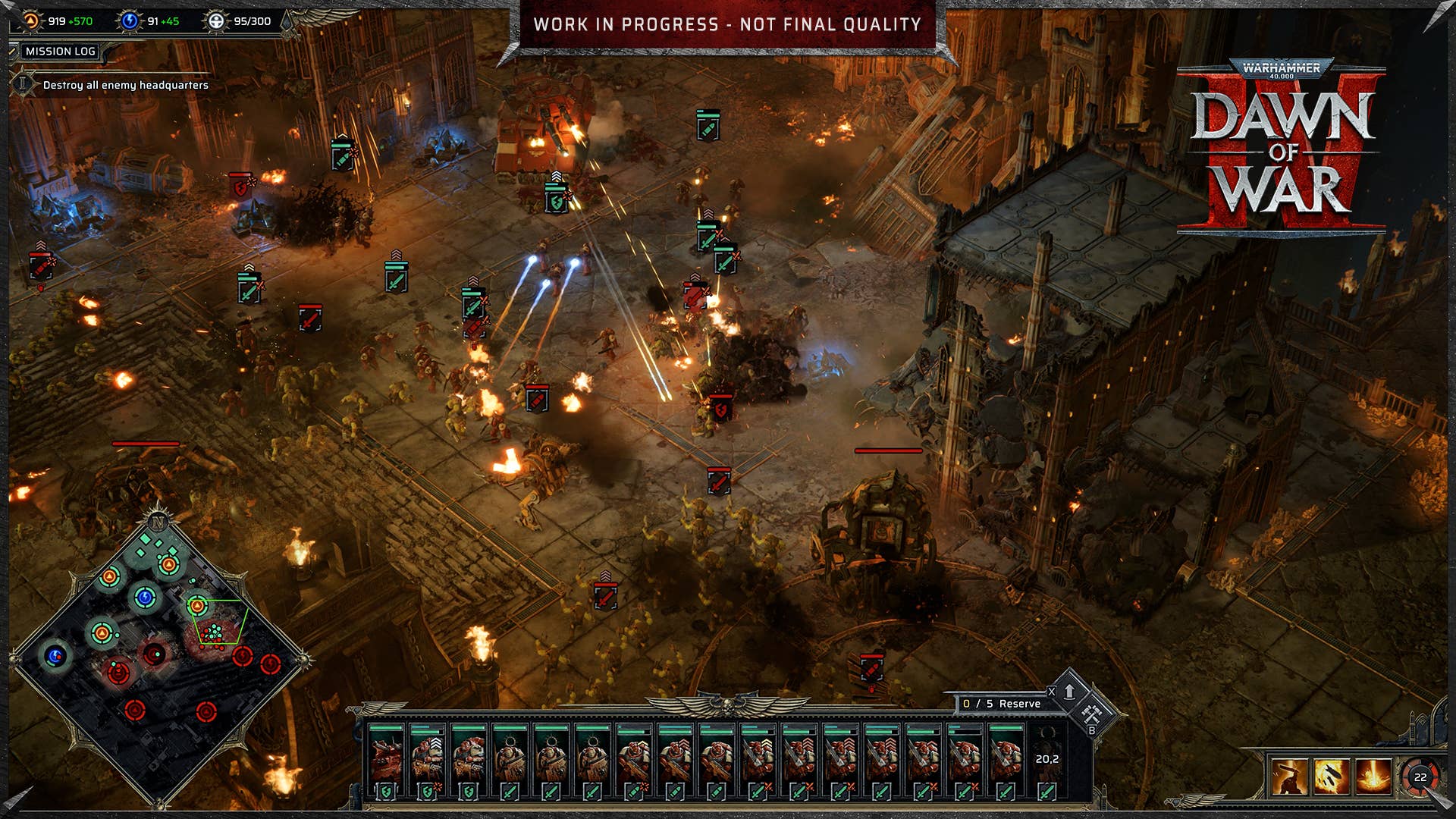
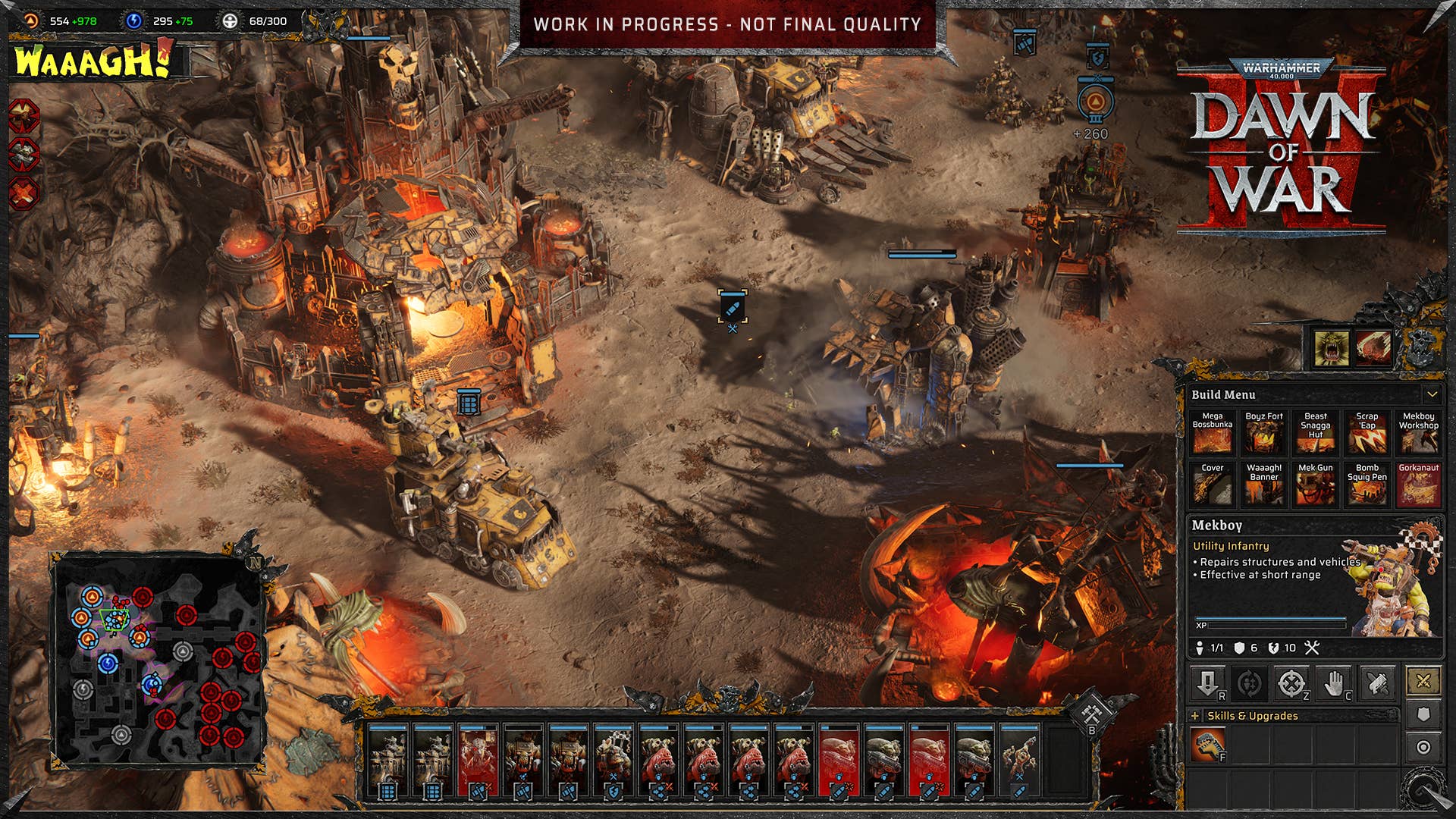
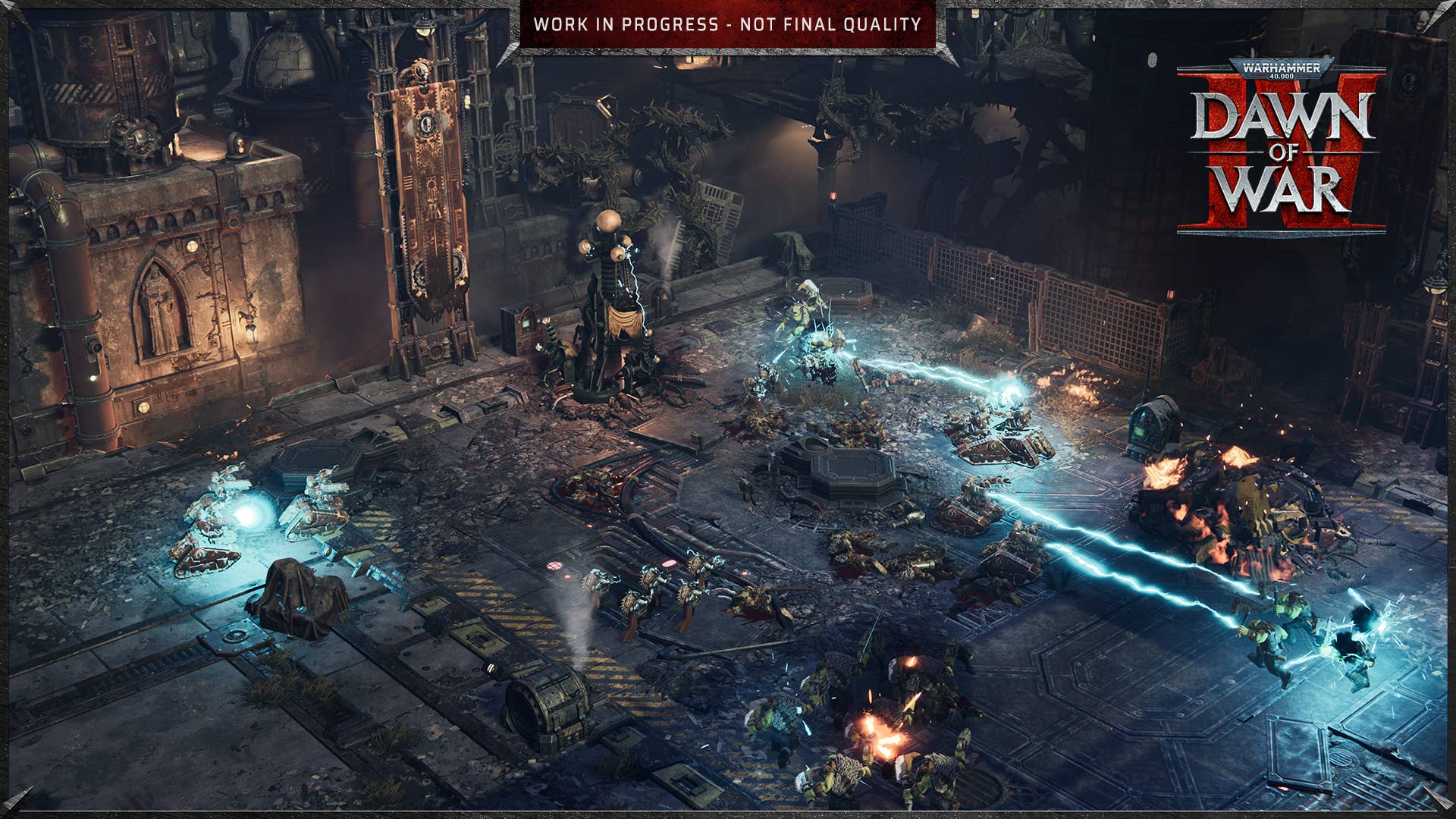
There’s plenty more the team is keen to talk about, as our conversation begins to run short on time. “You probably get more stuff in this game than in any other – not only Dawn of War, but probably most RTS games,” Theysen says, at least in terms of what’ll be there at launch. Skirmishes are “very, very configurable,” for instance, multiplayer maps can be configured too, as can enemy behaviour. The Last Stand, a horde mode from DoW 2, returns here and is playable solo with multiple others in co-op. The sense, above all, is that King Art games is naturally proud, and quite optimistic, about what it’s been able to produce so far. After playing it I think it’s very much justified.
It also leads on to a final question, which feels frustratingly inevitable with conversations about RTS games these days (though I’m well aware I’m saying that the one asking it). Does the team feel good about the state of the RTS these days? Is there optimism here beyond just Dawn of War 4, for such a venerable genre to at least regain a bit of its lost footing? Does all this “death of the RTS” stuff feel a bit overblown?
“RTS definitely isn’t the mainstream genre that it was maybe 20 years ago or something,” Theysen says. “And you know, if you expect, creating an RTS game like Age of Empires 4, sell a couple of million [copies] and then you know, call it a disappointment or whatever – or at least not a success – then okay, what do you expect?
“I think from our side,” he continues,” we know that there is a core RTS target audience that really likes to play RTS, and hopefully plays Dawn of War 4 because it’s a big, good RTS. Then we have this other target audience with 40K fans, who are interested in the game because it’s a 40K game… and we also hope to reach some players that are maybe looking for a good way to get into 40K, because it’s notoriously hard to get into such a big and complex universe.” (Worth noting here: Dawn of War 1 was my own personal introduction to 40K as a goofy little tween myself, so Theysen might be onto something.)
Verbiest’s answer meanwhile is simple enough, and one that, hopefully, Dawn of War 4 will help to ring especially true: “I don’t think that the RTS is necessarily back,” he says. “I don’t think it’s ever really gone away.”



